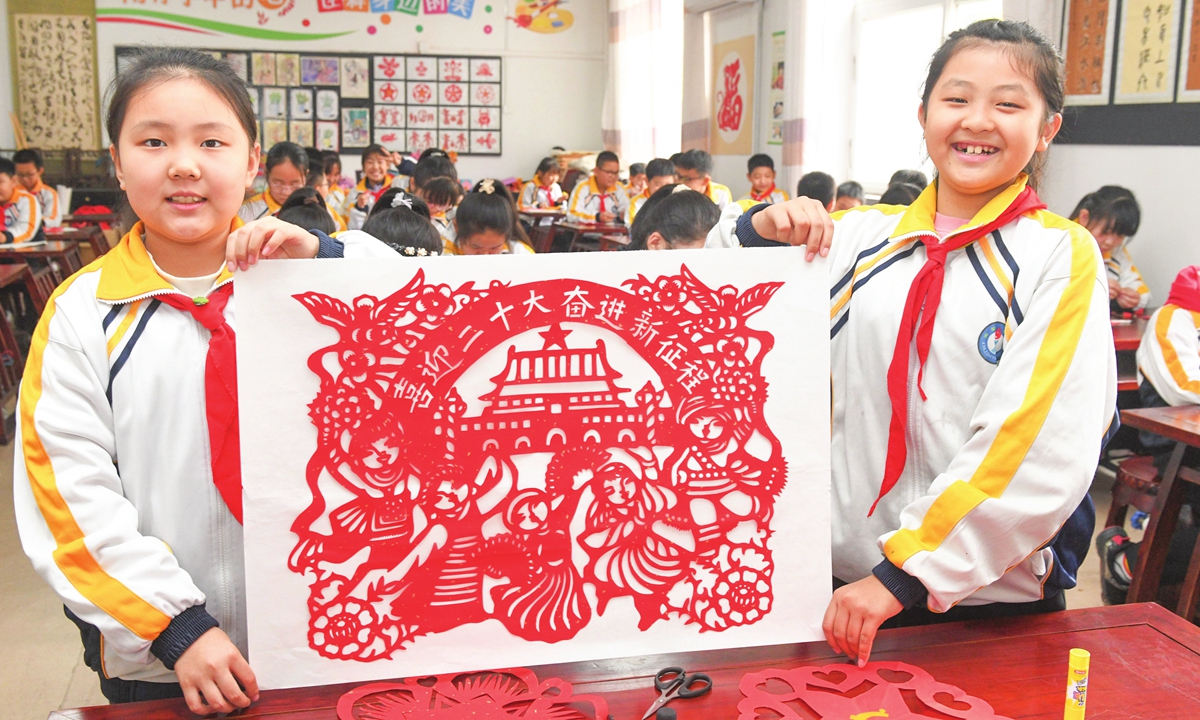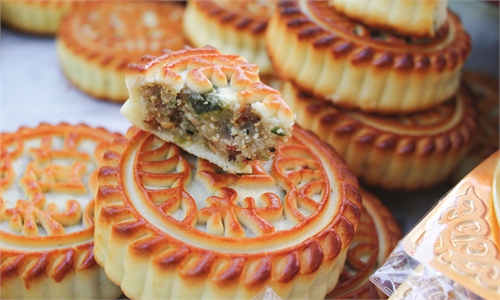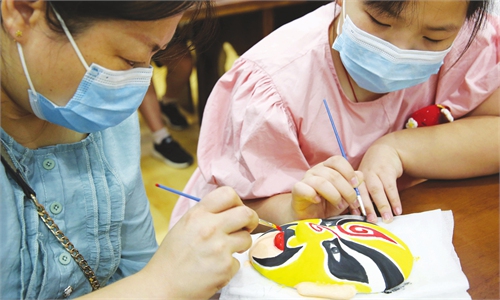ARTS / CULTURE & LEISURE
Cultural Heritage

Primary school students in Shijiazhuang, North China's Hebei Province display a paper cutting artwork. Photo: IC
Chinese paper cutting: Traditional art form popular across the countryChinese paper cutting is a kind of folk art that uses scissors or carving knives to cut patterns out of paper, which are then used as decorations. The images used in this art form are full of rich cultural and historical connotations and express people's social values, morality and aesthetic tastes.
Paper cutting is a tradition found in many places in China such as Hebei, Anhui and Guizhou provinces. It covers a wide range of themes and features various patterns, including opera characters, opera masks, myths and legends, flowers and birds, and auspicious beasts. Northern folk paper cutting features a rough and plain style with rich colors, while southern paper cutting emphasizes an exquisite and beautiful style.
For example, paper cutting in Yuxian county, North China's Hebei Province, has a history of more than 200 years. Patterns were originally mostly auspicious flowers, but then they were integrated into the artistic characteristics of Tianjin Yangliuqing New Year pictures, forming a brand new unique style.
Xiantao paper cutting in Central China's Hubei Province formed its own style during the early Qing Dynasty (1644-1911). This style features well-proportioned compositions and fine cut outs. Common themes include auspicious designs such as "magpies ascending and plum blossoms," the Chinese character for "good fortune" and "fish jumping through the dragon gate."
Features unique to this paper cutting are deft and neat cutting techniques, smooth and round lines, and full and balanced patterns.
Guangdong paper cutting is mainly centered around Foshan, South China's Guangdong Province. It is said that Foshan paper cutting originated from the Central Plains and was developed in combination with the local folk customs, handicrafts and commerce.
The content and form of traditional Foshan paper cutting are determined by contemporary social conditions and public interest. However, traditionally popular themes include happiness and auspiciousness, exorcisms and blessings for fertility and longevity.
Paper cutting is also popular in ethnic minority areas, such as Southwest China's Yunnan Province.
Many paper cuts are used to decorate things like the doors and windows of Buddhist temples and props used in performances. Common designs include dragons and phoenixes, peacocks and elephants.
On May 20, 2006, traditional Chinese paper cutting was included in the first batch of items inscribed on China's national intangible cultural heritage list. In September 2009, Chinese paper cutting was inscribed by UNESCO on the Representative List of Intangible Cultural Heritage of Humanity.
Global Times



